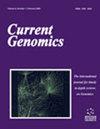Using Chaos-Game-Representation for Analysing the SARS-CoV-2 Lineages, Newly Emerging Strains and Recombinants
IF 1.4
4区 生物学
Q4 BIOCHEMISTRY & MOLECULAR BIOLOGY
引用次数: 0
Abstract
Background: Viruses have high mutation rates, facilitating rapid evolution and the emergence of new species, subspecies, strains and recombinant forms. Accurate classification of these forms is crucial for understanding viral evolution and developing therapeutic applications. Phylogenetic classification is typically performed by analyzing molecular differences at the genomic and sub-genomic levels. This involves aligning homologous proteins or genes. However, there is growing interest in developing alignment-free methods for whole-genome comparisons that are computationally efficient. Methods: Here we elaborate on the Chaos Game Representation (CGR) method, based on concepts of statistical physics and free of sequence alignment assumptions. We adopt the CGR method for classification of the closely related clades/lineages A and B of the SARS-Corona virus 2019 (SARS-CoV-2), which is one of the fastest evolving viruses. Results: Our study shows that the CGR approach can easily yield the SARS-CoV-2 phylogeny from the available whole genomes of lineage A and lineage B sequences. It also shows an accurate classification of eight different strains and the newly evolved XBB variant from its parental strains. Compared to alignment-based methods (Neighbour-Joining and Maximum Likelihood), the CGR method requires low computational resources, is fast and accurate for long sequences, and, being a K-mer based approach, allows simultaneous comparison of a large number of closely-related sequences of different sizes. Further, we developed an R pipeline CGRphylo, available on GitHub, which integrates the CGR module with various other R packages to create phylogenetic trees and visualize them. Conclusion: Our findings demonstrate the efficacy of the CGR method for accurate classification and tracking of rapidly evolving viruses, offering valuable insights into the evolution and emergence of new SARS-CoV-2 strains and recombinants.利用混沌博弈表示分析SARS-CoV-2谱系、新出现的毒株和重组体
背景:病毒具有高突变率,有利于快速进化和新物种、亚种、毒株和重组形式的出现。这些形式的准确分类对于理解病毒进化和开发治疗应用至关重要。系统发育分类通常通过分析基因组和亚基因组水平上的分子差异来进行。这包括对齐同源蛋白质或基因。然而,越来越多的人对开发计算效率高的全基因组比较的无比对方法感兴趣。方法:本文基于统计物理的概念,不考虑序列对齐的假设,详细阐述了混沌博弈表示(CGR)方法。我们采用CGR方法对进化速度最快的新型冠状病毒(SARS-CoV-2)的A、B两个密切相关分支/谱系进行分类。结果:我们的研究表明,CGR方法可以很容易地从现有的A和B谱系序列全基因组中获得SARS-CoV-2系统发育。它还显示了8种不同菌株的准确分类以及从其亲本菌株新进化的XBB变体。与基于比对的方法(neighbor - joining和Maximum Likelihood)相比,CGR方法需要较少的计算资源,对于长序列具有快速和准确的特点,并且作为一种基于K-mer的方法,可以同时比较大量不同大小的密切相关序列。此外,我们开发了一个R管道CGRphylo,可以在GitHub上获得,它将CGR模块与其他各种R包集成在一起,以创建系统发生树并将其可视化。结论:我们的研究结果证明了CGR方法对快速进化的病毒的准确分类和跟踪的有效性,为新的SARS-CoV-2毒株和重组体的进化和出现提供了有价值的见解。
本文章由计算机程序翻译,如有差异,请以英文原文为准。
求助全文
约1分钟内获得全文
求助全文
来源期刊

Current Genomics
生物-生化与分子生物学
CiteScore
5.20
自引率
0.00%
发文量
29
审稿时长
>0 weeks
期刊介绍:
Current Genomics is a peer-reviewed journal that provides essential reading about the latest and most important developments in genome science and related fields of research. Systems biology, systems modeling, machine learning, network inference, bioinformatics, computational biology, epigenetics, single cell genomics, extracellular vesicles, quantitative biology, and synthetic biology for the study of evolution, development, maintenance, aging and that of human health, human diseases, clinical genomics and precision medicine are topics of particular interest. The journal covers plant genomics. The journal will not consider articles dealing with breeding and livestock.
Current Genomics publishes three types of articles including:
i) Research papers from internationally-recognized experts reporting on new and original data generated at the genome scale level. Position papers dealing with new or challenging methodological approaches, whether experimental or mathematical, are greatly welcome in this section.
ii) Authoritative and comprehensive full-length or mini reviews from widely recognized experts, covering the latest developments in genome science and related fields of research such as systems biology, statistics and machine learning, quantitative biology, and precision medicine. Proposals for mini-hot topics (2-3 review papers) and full hot topics (6-8 review papers) guest edited by internationally-recognized experts are welcome in this section. Hot topic proposals should not contain original data and they should contain articles originating from at least 2 different countries.
iii) Opinion papers from internationally recognized experts addressing contemporary questions and issues in the field of genome science and systems biology and basic and clinical research practices.
 求助内容:
求助内容: 应助结果提醒方式:
应助结果提醒方式:


